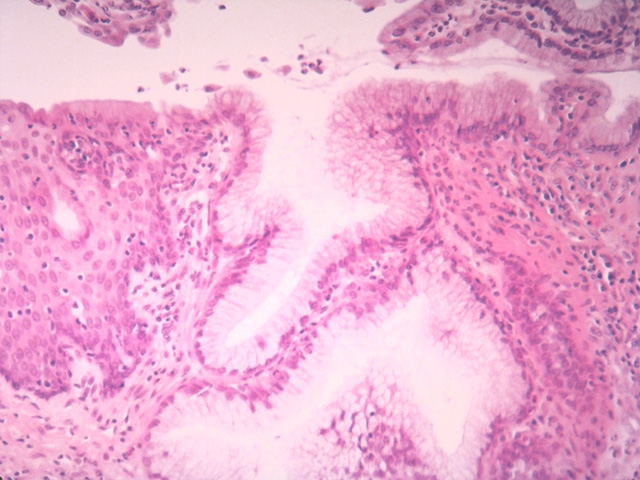Features
Summary
Findings
At high power, the squamocolumnar junction in the cervix is seen. Note the abrupt transition between the stratified squamous nonkeratinized epithelium of the exocervix and the simple columnar epithelium of the endocervix, and the cervical mucous glands that open into the cervical canal.
Comment
The cervix exhibits minimal changes during the menstrual cycle, and the mucosa is not shed at menstruation. However, there are changes in the secretion of the cervical mucous glands. During the proliferative phase in the endometrium, the glands produce thin and watery mucus. After ovulation, the mucus becomes viscous and restricts the passage of sperm. During pregnancy, the mucus forms a semisolid plug that restricts the passage of sperm or microorganisms. Cervical mucous glands may become occluded and form large cysts, so-called Nabothian cysts.
Preparation
Paraffin section, hematoxylin and eosin
View
High-power light microscopy
Specimen
Squamocolumnar junction
Image Credit
V. Eroschenko, Ph.D.Department of Biological Sciences
WAMI Medical Program
University of Idaho

